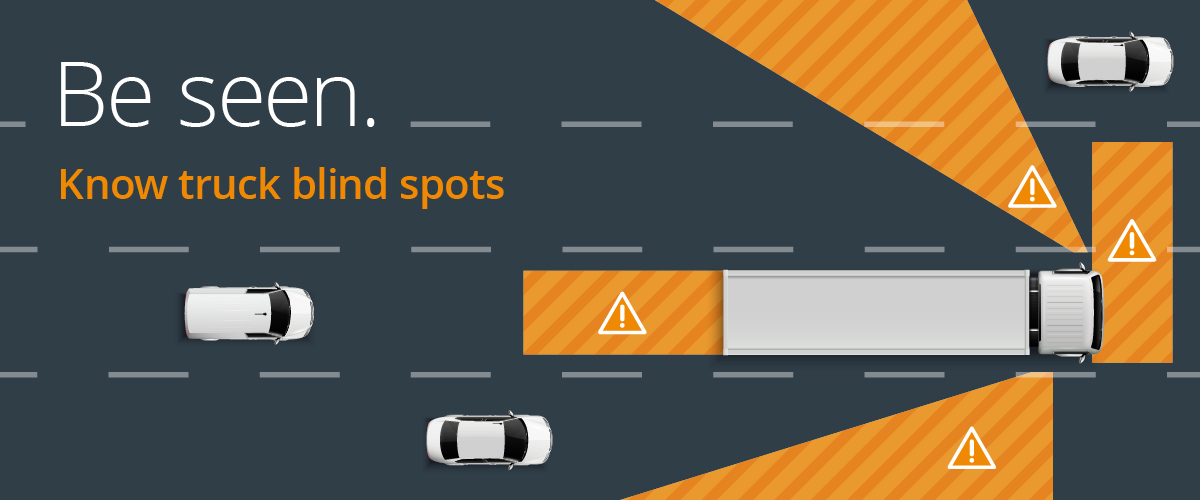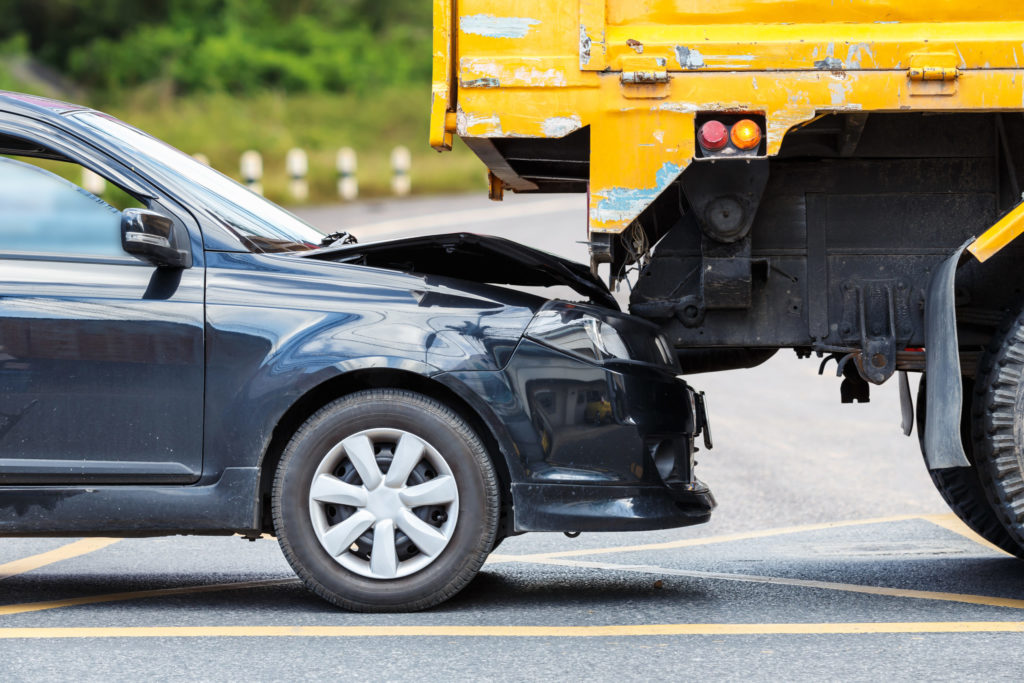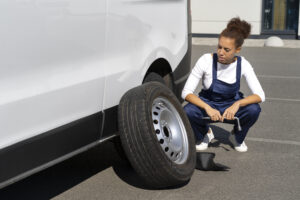By Vuyi Mpofu
Driving around commercial trucks can be dangerous, so you must exercise caution when in their vicinity. The risk of an accident increases with these vehicles because they have larger blind spots, cannot manoeuver as easily as smaller vehicles, and take longer to stop compared to passenger vehicles.

According to Arrive Alive, 70% of all truck-related car fatalities are initiated by car drivers, with 35% of these accidents occurring in blind spots around trucks.
- There are four blind spots around tractor-trailer combinations where cars quite literally disappear from a truck driver’s view. These are located as follows:
- Directly behind them, (trucks don’t have rear-view mirrors or windows) and as such have a very limited view. In most instances, truckers can only see an object from within 10 to 50 metres behind their trailer.
- On the left and right sides of the body of the truck, (similar to a passenger car).
- Directly in front of them, (due to their raised seating position, truckers can see further ahead than directly below the hood of their vehicles. If you cut in front of a truck your vehicle disappears from the truck driver’s view; that is until you accelerate and put some distance between yourself and the truck.

Overtaking Safely
- The longer the truck, the more distance you will need to pass it. Don’t pass unless you are confident there is enough space for you to safely do so.
- When overtaking, do not pull out from directly behind a truck. Rather, fall back a few meters, edge slightly into the truck driver’s line of sight giving them a few seconds to see you, then overtake when safe to do so.
- Never overtake a truck on the left – the blind spot is even larger on that side
- When overtaking – stay as far to the right as safely possible. This reduces the effect of air turbulence on your vehicle and gives you a margin of safety should the truck move out of its lane.
- Make sure you have enough power to complete your pass. Change down a gear or two if necessary but whatever you do, do not linger or drive side-by-side with the truck.
- Once you have completed the pass, make sure to re-enter the lane as far ahead of the track as reasonably possible. Remember that one of a truck’s blind spots is directly in front of them so it is very possible to get run-over by a truck if you cut in front too soon after passing it.
- Be aware that large trucks create a lot of air turbulence around them, therefore motorists should be prepared for a bit of “rock-and-roll” from the turbulence when passing a truck. It is not that truckers are trying to run you off the road or try to prevent you from overtaking them. Rather, keep a firm grip on the steering wheel and aim to pass as soon as you can.

Be alert, especially in adverse weather
- Bad weather makes passing a large truck all the more difficult. A cocktail of splash and spray, air turbulence, poor control of both vehicles on slick surfaces, and diminished visibility increases the possibility of a collision.
- A lot can happen in a matter of seconds and a driver should be prepared for anything. Always turn on your windshield wipers before overtaking a truck in wet weather as this will help increase your ability to see what is going on around you. A clear windscreen will help you identify oncoming traffic, pedestrians, stray animals, and potholes among other things. If your wipers are you, you increase your chances of driving safely around a truck.

Watch those turns
- Truck drivers sometimes need to swing wide either to the left or right so as to turn the corner.
- Due to the height of a truck’s cab, trucks cannot always see vehicles squeezing in between them and the curb. Their focus is on ensuring the entire length of their truck turns without a hitch, a task which is exacerbated by narrow roads, potholes, mindless pedestrians, and reckless drivers.
- Instead of scurrying into the space between a truck and the curb, give the trucker room to execute the turn. If this means falling back or reversing then so be it. The idea is for everyone to reach their destinations safely.

Other helpful driving tips
- When a truck passes you, stay left and slow down to allow the trucker to pass.
- If a truck is signalling to change lanes, give it room. The driver may be trying to avoid another vehicle.
- When travelling in the left lane on a highway and you approach an on-ramp, move into the right lane to allow trucks to enter the highway; if you are unable to move to the right, then either accelerate or decelerate.
- When stopping behind a truck, remember that it might need space to roll back when it starts up again, especially on a hill. Make sure there is room between your vehicle and the truck.
- Be patient. You cannot always see what is ahead of the truck.
- The wheels of a truck sometimes throw up rocks that could hit your windscreen so don’t drive too closely behind a truck
- A truck’s wheels kick up water when it’s raining so it’s a good idea to ensure your wiper blades are in good condition.
- If a truck in front of you starts to slow down, there may be trouble ahead. Take the hint and slow down too.

Trucks need space to stop
It is important to note that trucks do not stop quickly and need a lot more space and time to come to a full stop. A loaded truck can weigh up to 56 tons and may take as much as the length of 1 to 2 football fields to stop.
Risky driving patterns such as cutting in front of trucks can cause truckers to dead brake or jack-knife.

Slow down around trucks
Lastly, driving around trucks at dusk or night can be more dangerous than during the day due to reduced visibility. Many trucks on our roads are not roadworthy and do not have rear reflectors or functioning taillights. This makes it difficult to see trucks at nightfall. The key is to slow down when approaching trucks at night.
You cannot always tell if a truck is moving slowly or if it has come to a stop. If stationary, be aware that it could have broken down and could be obstructing the road (half of its body parked in your lane). Without reflectors, you could drive head-on into it, with fatal results.






